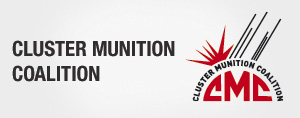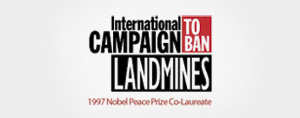14 November 2007
Press Release
Support for Anti-Landmine Treaty Strengthens in Middle East
AMMAN, Jordan – 14 November 2007
With Iraq and Kuwait joining the Mine Ban Treaty in the last four months, countries in the Middle East are increasingly rejecting antipersonnel landmines, according to Landmine Monitor Report 2007: Toward a Mine-Free World.
Jordan will be hosting the Eighth Meeting of States Parties to the Mine Ban Treaty from 18-22 November at the Dead Sea, the first time the annual meeting has been held in the region.
The last two states to join the 1997 Mine Ban Treaty are from the Middle East, and more countries in the region, including Bahrain, Lebanon, and Oman, are poised to join in the near future. The number of States Parties to the Mine Ban Treaty stands at 155, or around 80% of all states.
“Ten years after the negotiation and signing of the Mine Ban Treaty, the stigmatization of antipersonnel mines continues to spread,” said Steve Goose of Human Rights Watch, Landmine Monitor’s Ban Policy Editor. “As we have seen over the past year, the norm against mine use has more firmly taken hold in the Middle East.”
Lebanon’s proposed accession to the treaty comes in the wake of the July-August 2006 conflict, which saw more explosive remnants of war (ERW), primarily cluster submunitions, added to the existing landmine and ERW problem. Despite the estimated clearance of almost 35 km2 of contaminated areas by the end of 2007, 10 km2 will still need to be cleared in 2008. The UN also reported that Israel laid mines during the conflict, although Israel denied the charge.
“Every step in South Lebanon is a dangerous step,” said Ms. Habbouba Aoun of the LebanonMineResourceCenter and member of the ICBL Management Committee. “Israel’s widespread and indiscriminate use of cluster bombs in Lebanon resulted in contamination that only a sustained effort can overcome.”
While recorded casualties in the Middle East and North Africa fell dramatically from 990 in 2005, to 539 in 2006, an approximately tenfold casualty increase was reported in Lebanon in 2006, with 207 (22 in 2005) recorded casualties, including 182 cluster submunition casualties. In Iraq the news was more encouraging, as mine and ERW casualties decreased significantly in 2006, to 99 (358 in 2005), although these statistics do not include casualties caused by command-detonated improvised explosive devices, which are commonly used in the country.
“Casualty decreases in several severely mine-affected countries are mainly due to deteriorating data collection,” says Katleen Maes of Handicap International, and Landmine Monitor’s Victim Assistance Coordinator. “However, Iraq’s accession to the Mine Ban Treaty could pave the way to a better response to the needs and rights of survivors, their families and communities.”
Jordan increased its clearance productivity in 2006, in advance of its treaty-mandated clearance deadline of 1 May 2009.
“Jordan has made good progress on mine clearance,” said Mr. Stuart Casey-Maslen of Norwegian People’s Aid, Landmine Monitor’s Mine Action Editor. “But we encourage Jordan to clear its remaining minefields along the border with Syria, so that its 2009 deadline can be met.”
Although clearance in the region continues to improve, mine risk education (MRE) requires expansion, as it is still considered inadequate in Iran, Iraq, Jordan, Palestine, Syria and Western Sahara. Kuwait has an urgent need for MRE, as none is currently conducted and casualties continue to be reported.
Due to the mine/ERW contamination left behind from the July-August 2006 conflict with Israel, Lebanon received more than ten times the funding it did in 2005. Iraq noted a 27% increase in international funding from 2005. The global funding total rose to US$475 million.
“While donor states responded quickly to ERW contamination in Lebanon, what is needed is multi-year funding by national and international donors,” said Mr. Anthony Forrest of Mines Action Canada, Landmine Monitor’s Mine Action Funding Editor.
The treaty prohibits the use, production, and trade of antipersonnel landmines. It requires clearance of mined areas within 10 years and the destruction of stockpiled mines within four years. Landmine Monitor Report 2007 reports on landmine use, production, trade, stockpiling, demining, casualties, survivor assistance and mine action funding in 118 countries and areas.
Landmine Monitor is coordinated by an Editorial Board drawn from four organizations: Mines Action Canada, Handicap International, Human Rights Watch and Norwegian People’s Aid. It constitutes a sustainable and systematic way for NGOs to monitor and report on the implementation of a disarmament treaty.
Landmine Monitor Report 2007 and related documents, including Arabic translations, are available atwww.icbl.org/lm/2007.For more information or to schedule an interview contact:
- Ms. Jackie Hansen, Landmine Monitor Project Manager, Amman, Mobile +1-613-851-5436, Jordan Mobile +962-79-965-0137, email monitor@icblcmc.org
- Ms. Simona Beltrami, ICBL Advocacy Director, Amman, Mobile +39-33-3714-2251, Jordan Mobile: +962-79-9650189, email simona@icbl.org



